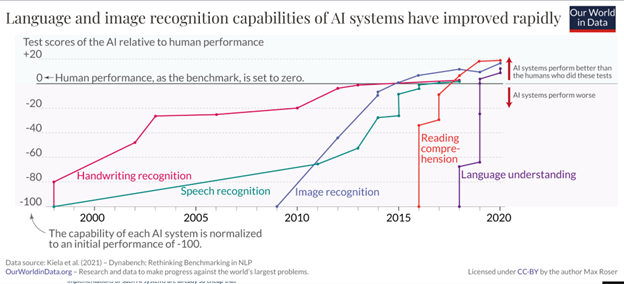Agile frameworks don’t actually create agility. And that’s a problem, because agility is more important than ever.
Consider the past five years: The pandemic. Work from home. Supply chain challenges. Geopolitical instability in Europe and Asia. The rise of crypto and the rise and fall of NFTs. And then AI.
And all in just the past five years!
This is not a phase: it is the new normal.
This level of instability and pace of change continues to accelerate. Product lifecycles that used to be a decade are now a year. Many are saying that the “half life” of tech skills is now less than three years. Think of the ramifications of that for your company’s ability to stay technically current.
Ironically, Agile frameworks don’t yield the agility that companies need. Yet there are companies that are truly agile, in a real sense, and I’ll explain how they do it. It’s not what you think.

Different Kinds of Agility
Anticipating change is an aspect of business agility, and as a whole, most businesses failed miserably in anticipating the rise of AI.
They failed, even though the progress on generative AI was steady it was all predictable to those who were paying attention. In the words of Dario Amodei, who led the team at OpenAI that created GPT-2 and then GPT-3,
“It looks like it comes out of nowhere. And it’s triggered by things hitting various critical points or just the public happened to be engaged at a certain time…[improvements in] the underlying technology [has been] a smooth exponential.”
In fact, if we look at the progress of AI over the last 20 years, GPT-4 is easily predicted (see graph).

Source: https://ourworldindata.org/brief-history-of-ai
So why were most product companies caught by surprise? Why were they not contacting AI companies like OpenAI to partner with them, prior to the ChatGPT announcement? Most product companies failed at the strategically important task of anticipating predictable technology evolution. I believe they failed because today’s companies are effectively dumbed down because their leaders are in meetings all the time, but that’s another topic.
Most companies continue to fail at the strategically important task of anticipating predictable technology evolution.
The ability to look ahead, anticipate, and be ready for change is what I will call strategic agility.
Another kind of agility is the ability to rapidly change direction, once you realize that you need to. I’ll call this operational agility.
During 2023 a lot of product companies canceled projects and shifted their resources to add AI to their products. How painful was that shift? Was it necessary to rapidly upskill people, and did that take a long time? Did it cause some chaos? Was valuable time-to-market lost?
Now imagine that you have to go through that every year. If you were not ready once, will you be ready next time? And if you think that change will be incremental, think again. It won’t. It will be different. It will not be like last time.
But there are companies that pivot quickly and easily. My partners and I examined five large companies that have pivoted dramatically, quickly, and successfully. The companies are Google, Netflix, Amazon, Spotify, and SpaceX.
What we found is that none of those companies mandates any “Agile frameworks”. And at many of those companies they don’t even talk about Agile very much. (It turns out that a lot of Agile core ideas are close but not quite right either, but that’s another topic.) Here’s what a senior software manager at SpaceX told me:
“SpaceX also [has] no Agile people or PMs…Also we don’t use the word Agile. We use the word ownership.”
What we found to be common across all five companies was certain leader behaviors. It turned out that the agility that these companies have shown is mostly a result of behavior – the behavior of their leaders. Specifically, we found twelve behaviors that were common across the leaders of each of the five companies. (Some are listed here.)
Agility – and effectiveness goes with that – is all about behavior. It is not a process. It is about how people react to situations. What they prioritize. How they talk to others. What kinds of directives they give. What incentives they create. How they voice opinions, and how they listen to others.
How to Achieve True Agility (and Effectiveness)
It’s actually pretty clear cut: people need to become better leaders. For strategic agility, it is the people at the very top. For operational agility, it is them but also all other leaders throughout the organization, at all levels.
That’s because agility is behavioral, and bad leaders can shut down the agility of other leaders.
One of us recalls being in a meeting with several VPs who had all agreed on an approach for solving a problem. The senior VP then walked in, and on hearing what was being planned, angrily disparaged the idea and then left. The meeting then broke up and no action was taken, and two years later the same problem was still unresolved.
Some people are born leaders. But the rest of us must learn.
There are also different kinds of leader, and for companies that build complex products, we need most of those kinds. Not one kind, but many.
Some people are born leaders. But the rest of us must learn.
We all know that we learn leadership from experience. But learning only through experience is a slow road. Imagine that you had to learn how to play the piano, but you only learned from experience: you had no lessons, no written music, no one to help you. It would probably take you a lot longer, unless you are especially gifted, which some people are.
Leadership has been extensively researched. We can learn a lot about it by studying it, and then applying what we have studied. That provides us with a powerful cognitive lens through which we can interpret our experience when we try to lead. A cognitive understanding greatly accelerates our learning.
That’s why classroom study is an important component of leadership development. It is not enough though. We need those experiences. And we need a forum in which we can discuss our experiences with others who have more experience than us: people who not only have deep leadership experience, but who also understand the theory and how to lead dialogic discussions in which people discover the answers for themselves.
In addition to leadership, there are other areas of knowledge that are really helpful for understanding agility. These include group behavior, and also the neurology-based differences in how people communicate, think, and create. Understanding these differences prevents us from assuming that there is a best way for everyone, because there isn’t.
A program for increasing agility is therefore a learning program. And like any good learning program, it should include assessment of progress: both behavioral indicators as well as outcome-based indicators that reflect the organization’s actual agility.
Guess what? That’s what we developed!
What About “Agile”?
Forget “Agile”. All that stuff is nothing more than opinions. None of it – literally none of it – is supported by research.
Consider the common Agile narrative that teams should self organize. It’s actually very bad advice. The acclaimed research of Nicole Forsgren, documented in the best selling book Accelerate, revealed that the most effective product development teams are those that have transformational leaders. They are not self-organizing: they have leaders.
In fact, Agile is rife with unsubstantiated opinions and extremes. The Agile movement arguably began with the rise of “Extreme Programming” – eponymously extreme. But extremes don’t usually work well except in extreme situations. The entire Agile landscape consists of extremes and over-simplifications of complex issues, from the idea that teams should self organize to the idea that everyone has to sit next to each other in an “Agile team room” to be productive. These claims are just not true – they are only claims.
That’s why it did not surprise us that none of the highly agile-in-a-true-sense companies that we studied mandates any “Agile frameworks”. It turned out that Agile frameworks were irrelevant, and that actual agility arises from other things – most significantly leader behavior.
Conclusion
If you are realizing that you don’t need Agile frameworks – in fact, that you should stay away from Agile frameworks, then you are on the right track. But you do need agility: real agility. And that is behavioral. There is no magic process that you can install that will create agility. The only path is to improve the leadership abilities of all of your people, beginning with those who have the highest leverage behaviorally. Agility will follow as leaders become better leaders. And if you think about it, that’s just common sense: you know it’s true. You just have to overcome the brainwashing that the Agile community has subjected all of us to for 20+ years.

Cliff is Managing Partner of Agile 2 Academy. As a successful tech entrepreneur, he was co-founder and CTO of Digital Focus, a startup that grew from 2 to 200 people in five years and was known for its success in rapidly building high reliability Internet-facing business critical systems for companies like FedEx, McKesson, United Overseas Bank, and many others. It was acquired in 2006. Cliff’s 2006 textbook High-Assurance Design documents many of the engineering and agility lessons learned. Since then Cliff has helped with more than ten Agile or DevOps transformations, and is a DevOps trainer and subject matter expert. In 2020 Cliff assembled the global Agile 2 team to reimagine “Agile”, and was the lead author of the Agile 2 book. Cliff is certified in the Human Synergistics Organizational Culture Inventory® and Organizational Effectiveness Inventory® assessment tools. He has degrees from Cornell University in Operations Research, Nuclear Engineering, and Physics.













